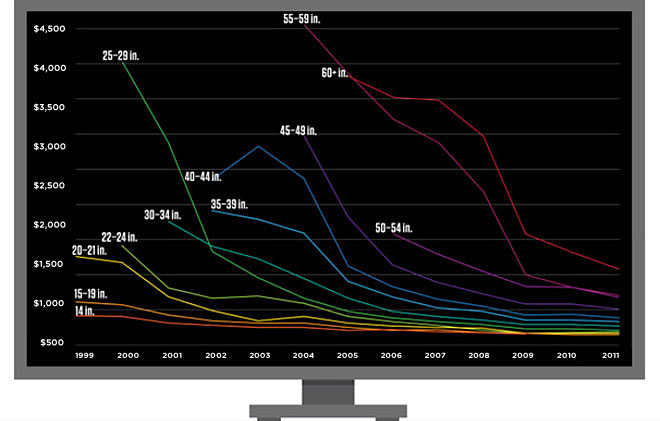Like multicore computer chips, Android smartphones, and Starbucks coffee, LCD TVs are getting cheaper—and bigger—all the time. Inevitably, your brother-in-law’s new 55-inch TV cost less than the 48-inch model you bought two years ago. Why? Science! See, flat-panel displays are made by machines that print arrays of circuits on sheets of glass and then slice those sheets into screens like high tech brownies. And since 1999, those machines have increased in size by 800 percent. Thus, the Law of Big Glass: The larger the glass printer, the cheaper—or bigger—the TV.
In 1993, the industry-standard tool for “printing” display circuitry, a TFT-LCD deposition machine, could work with glass no bigger than about 18 inches square. Today, they can handle sheets that are 11 feet on a side—the size of a garage door—and just a millimeter thick. A 20-inch flatscreen TV cost $1,200 in 1999; it costs just $84 today.
The law applies to organic LED displays, too—which is great, since they’re brighter and more energy-efficient than LCDs. OLED screens use a related manufacturing process, and right now they’re printed on 4 x 5-foot sheets. But the Law of Big Glass says 55-inch OLEDs will someday go for less than $1,000 at Costco. By then you’ll probably want a tiny, ridiculously expensive holodeck.
Full story from Wired issue 19.05: Infoporn: How Flatscreen TVs Get Cheaper | Magazine.
